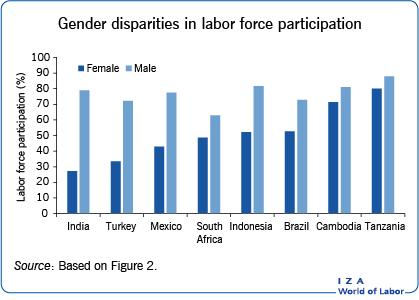Elevator pitch
The relationship between female labor force participation and economic development is far more complex than often portrayed in both the academic literature and policy debates. Due to various economic and social factors, such as the pattern of growth, education attainment, and social norms, trends in female labor force participation do not conform consistently with the notion of a U-shaped relationship with GDP. Beyond participation rates, policymakers need to focus on improving women’s access to quality employment.

Key findings
Pros
Female labor force participation is an important driver (and outcome) of growth and development.
Women participate in the labor force in developing countries because of poverty and as a coping mechanism in response to shocks.
The participation of women is the outcome of various economic and social factors.
Access to quality education (beyond secondary) is critical to improve employment outcomes for women.
Cons
Even when gender disparities in participation rates are low, women tend to earn less than men and are more likely to be engaged in unprotected jobs, such as domestic work.
Education raises the reservation wage and expectations of women, but it needs to be matched by job creation.
Underreporting is common, so data on women’s participation rates do not accurately reflect women’s work.